Advanced Email Marketing: Top tips to Elevate your Campaigns
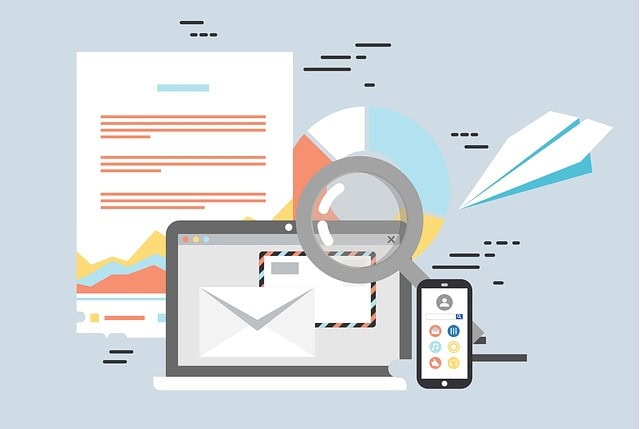
Email marketing has come a long way since the early days of mass messages. Today, advanced email marketing can transform the way you nurture your audience. Discover what it would look like for email to become a powerful channel.
It increases engagement and sales like no other! You need to build a strategy that nails segmentation and personalization. Know your audience; talk to them directly.
Every email must feel like a conversation you’re having with a friend. With these strategies, you don’t just land in inboxes; you land in hearts. It’s not about sending more emails; it’s about sending the right ones.
Cut through the clutter and craft messages that matter. Now let’s dig into the best practices and get your email game on track. Get ready to see results like never before.
On this page:
Key Takeaways
-
Advanced email marketing is the game-changer you need for your business.
-
Personalization and segmentation drive engagement, making each message feel personal and targeted.
-
Analyze metrics regularly to see what’s working and what needs improvement. Optimize your campaigns accordingly.
-
Email deliverability is an important factor to boost. Keep your list nice and clean, and work to write great content that won’t get picked up as spam.
-
Segmenting your audience and reaching out to them regularly with value creates a loyal customer relationship.
Email as Two-Way Communication
Engage with Audience
Interactive content, such as quizzes and polls, can significantly enhance email marketing engagement. By incorporating advanced email marketing strategies, you can stimulate responses and keep subscribers interested in your marketing emails.
This approach encourages participation and helps maintain a robust email subscriber base.
Personalized messages are crucial in any effective email marketing strategy. Tailoring emails based on individual subscriber interests and preferences not only enhances connection but also improves email deliverability.
Utilizing their names in communications can further strengthen relationships and boost email marketing results.
Storytelling techniques serve as powerful email marketing techniques that resonate emotionally with your audience. By sharing relatable stories, you can build trust and foster strong customer relationships.
This approach aligns with advanced email marketing best practices, ensuring your email campaigns remain effective and engaging for your target audience.
“Emails with personalized subject lines have a 50% higher open rate compared to those without, demonstrating the power of tailored messaging.”
Yes Lifecycle Marketing
Encourage Feedback
Surveys and polls are powerful email marketing tools that help gather insights directly from your email subscribers.
By implementing these within your emails, you can better understand their needs, which is vital for improving your email marketing strategy and achieving effective email marketing results.
Feedback loops are essential for growth and can enhance your email marketing techniques. Utilize the information gathered to refine your email content and strategies.
Subscribers appreciate when brands listen and adapt based on their input, ultimately leading to more successful email campaigns.
Highlight the changes made from feedback to show subscribers how their opinions matter.
By implementing their suggestions, you foster loyalty and encourage more responses in the future, which is crucial for building an engaged subscriber base and maximizing email marketing revenue.
Foster Community
Develop exclusive groups or forums for your email subscribers. These spaces allow them to share experiences and ideas freely, which enhances the overall email marketing strategy.
A sense of community is essential for powerful email marketing and can significantly improve email marketing results.
Organize virtual events or webinars for your subscribers to engage the community and build relationships among members.
These activities provide valuable opportunities for learning and connection, serving as effective email marketing techniques that foster deeper engagement with your target audience.
Share user-generated content in your marketing emails. This approach not only creates a sense of belonging among subscribers but also demonstrates that you value their contributions, further enhancing community ties and promoting a successful email marketing program.
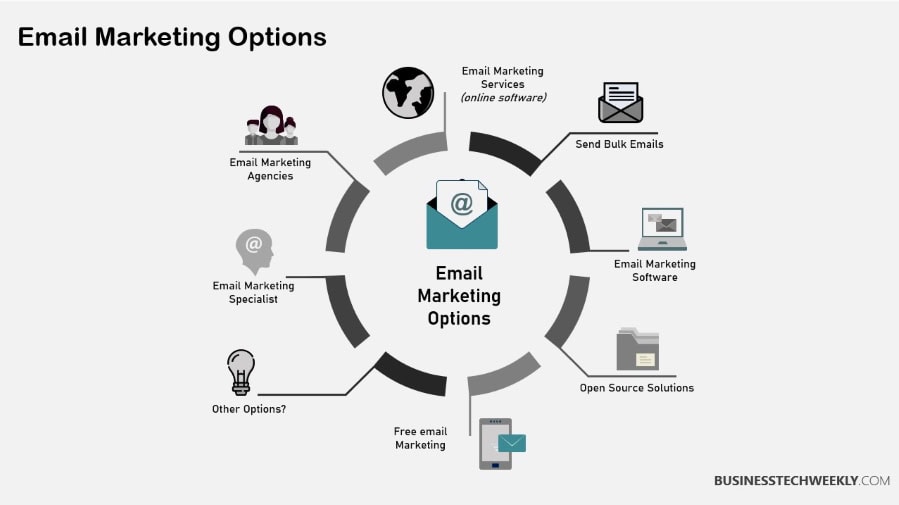
Building Effective Email Campaigns
It’s much like how you put together successful email campaigns. You need all the right pieces to fit together perfectly. Here’s a quick list to guide you: set clear objectives, know your audience, craft compelling content, and ensure alignment with your overall marketing strategies.
Think of it like this: if your emails don’t match your broader goals, you’re missing out on a huge opportunity to engage and convert your audience. You must create messages that resonate with people. It makes them feel like the email was written specifically for them. Personalized emails have a 30% higher open rate, so it’s worth the effort!
1. Create Engaging Customer Journeys
Mapping out customer journeys is like planning a road trip. First, use your customer data to tailor your emails — speaking to the needs and preferences of your audience. For example, if someone loves outdoor gear, send them emails about the latest hiking boots or camping gear.
Think of interests, past purchases, and even birthdays. Feedback loops are your best friends here. By listening to responses, you can tweak and improve the journey continuously. In fact, remember, email marketing was one of the prime engines behind Obama’s success in his 2012 campaign, so you’re in great company!
2. Use Visual Workflow Builders
Visual workflow builders are like GPS for your email campaigns. They simplify the process, showing you the way to design your campaigns efficiently. Using flowcharts can help you visualize customer interactions and automate responses, making your life easier.
These tools are user-friendly and enhance the effectiveness of your campaigns. By seeing the entire flow, you can spot bottlenecks and optimize the journey, ensuring your message lands perfectly every time.
3. Integrate Multi-Channel Support
Combining email with channels like social media and SMS can potentially explode your reach and engagement. Here’s why: each channel has its own set of followers, so by connecting them, you’re casting a wider net.
A quick SMS reminder about a sale can supplement your email campaign. It keeps your brand in the forefront of customers’ minds. The key is consistency. Make sure your message and tone are consistent across channels. This cohesion strengthens the trust and recognition of your audience.
4. Ensure Validation and Testing
Before hitting send, validation and testing are crucial. Validating your email list keeps your deliverability rates high. Create a checklist that includes testing subject lines (since 47% of emails are opened based on this alone), email layouts, and more.
Most US companies (about 89%) use A/B testing to refine their strategies. Regular testing is like routine maintenance for your car—it keeps everything running smoothly. Plus, ongoing testing allows you to adapt to trends and subscriber preferences, boosting your campaign’s success.
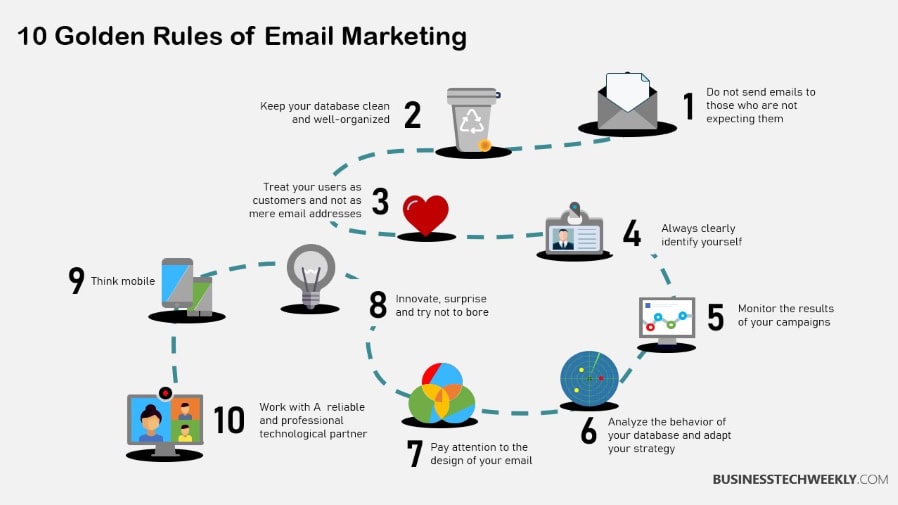
Enhancing Personalization and Segmentation
Segmenting your audience and personalizing emails specifically for them is when email marketing becomes a game changer. You know how it goes; not everyone on your list is the same. Some may be longtime purchasers, and some may have only glanced at your website once.
That’s where advanced segmentation comes in. It’s about slicing your audience into smaller groups based on factors like behavior and preferences.
For example, you can sort them by demographics, purchase history, or how often they engage with your content. This makes each email feel relevant to your reader, which can lead to better open and click-through rates.
Campaign Monitor found that marketers saw a huge 760% revenue increase from segmented campaigns. So, it’s clear that a one-size-fits-all email strategy just does not work anymore.
Implement Advanced Segmentation Techniques
-
Segmentation Criteria:
-
Demographics
-
Purchase history
-
Engagement levels
-
Once you break your audience down, you get a chance to target messages — more engagement, better results. Think about it: when an email feels like it was made just for you, you’re more likely to open it, right?
By segmenting, you’re not just sending emails; you’re sending the right emails to the right people. You benefit from higher open and click-through rates, which will make your campaigns work better.
Personalize Email Messages Effectively
Personalization is the name of the game. You can keep it simple to get started by using your recipients’ names in your messages and providing personalized recommendations based on their past behavior.
When your messages are relevant, your subscribers feel seen and valued, which increases their loyalty. This approach reduces unsubscribe rates. When people find your emails useful and entertaining, they’re much more likely to hang out!
A personalized strategy that adjusts timing, cadence, and content based on behavioral data can work wonders for your performance.
Leverage AI for Personalization Opportunities
AI can be your secret weapon here. It can sift through mountains of customer data to deliver personalized experiences. Leverage AI insights to anticipate your customers’ next wants and needs.
Automate personalization at scale to give them what they want! Picture yourself getting your hands on a robust tool. It helps you write the perfect email every time, which just makes your job that much easier!
That’s the beauty of AI in email marketing.
Utilize Lead Scoring Methods
Lead scoring is an effective email marketing technique that allows you to evaluate who to engage with based on their engagement and chances of converting.
-
Lead Scoring Factors:
-
Email interactions
-
Website behavior
-
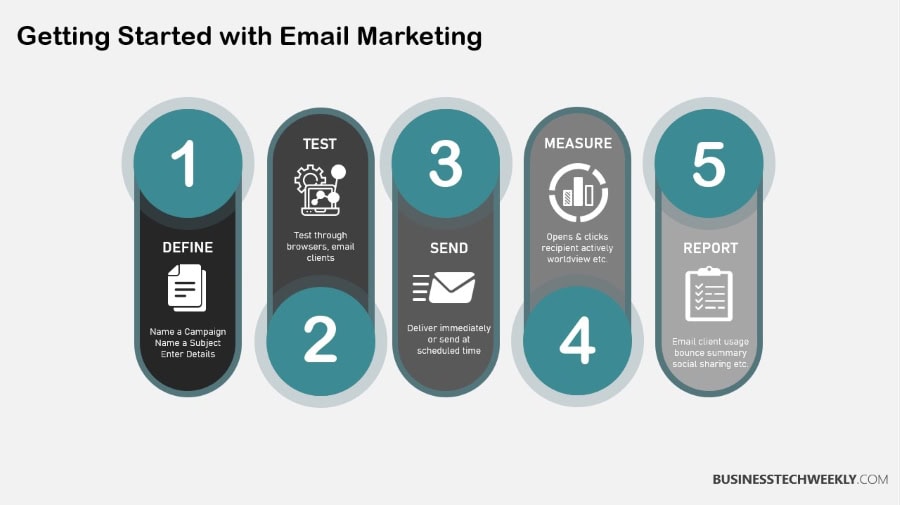
Optimizing Campaign Performance
To accurately measure how well your emails perform, you need to look at the right KPIs (Key Performance Indicators). That analysis is key to understanding their performance. These metrics aren’t just numbers; they’re a narrative of your campaign’s success.
Start by monitoring open rates, click-through rates, and conversion rates. These are the numbers that reveal how engaged your audience is. If you notice low open rates, do something about it! Refine your subject lines or change your sending times to increase open rates.
A checklist for tracking these metrics can be a game-changer. That way, you know where to double down on improving. Now that you have this data, you can make adjustments to get better results. See how you can use the insights to create strategies and improve your approach.
Test Email Frequency and Timing
Finding the sweet spot for how often you send emails can feel like juggling. You don’t want to be too much in your audience’s face, but you want them to remember you. It’s worth testing different frequencies to discover what works best for your subscribers.
Understand when your emails are opened and engaged with the most. Our research indicates Tuesday, Wednesday, and Thursday are the optimum days to send emails. Emails sent between 10 AM and 2 PM have the most success.
Here’s a quick list of good practices:
-
Avoid sending emails close to national holidays.
-
Use historical data to guide your timing.
-
Keep testing and refining based on engagement rates.
Validate Ideas with A/B Testing
A/B testing is your friend for finding out what your audience likes. It’s a bit like running a mini-experiment on your email list. You might experiment with different subject lines, content layouts, and call-to-action buttons to determine what performs best.
Here’s what you might want to test:
-
Subject lines that pique curiosity.
-
Different email formats or designs.
-
Varied calls to action for better engagement.
Data-driven decisions are the key to optimizing your campaigns. These tests yield useful information. Use them to personalize your messages so they genuinely speak to your readers.
Optimize Send Times for Maximum Impact
By sending your emails at the optimal times, engagement will skyrocket. Look at your historical data to figure out when your audience is most active. Time zones and industry trends can shape how effective send times are.
Consider these points:
-
Time when you know your audience is going to check emails.
-
Account for different time zones in your audience.
-
Avoid peak email times unless your industry suggests otherwise.
Testing and adjusting based on subscriber behavior can help you pinpoint the best times to reach your audience effectively.
Experiment with Dynamic Content and GIFs
Including dynamic content adds a personal touch to your emails. This means displaying different messages to different groups depending on their interests. Adding GIFs also works to get more eyes on your emails when competition for attention is so high.
Use creativity wisely; the goal is to add clarity, not clutter. Balance is key to ensuring your message comes through clearly while keeping things visually interesting.
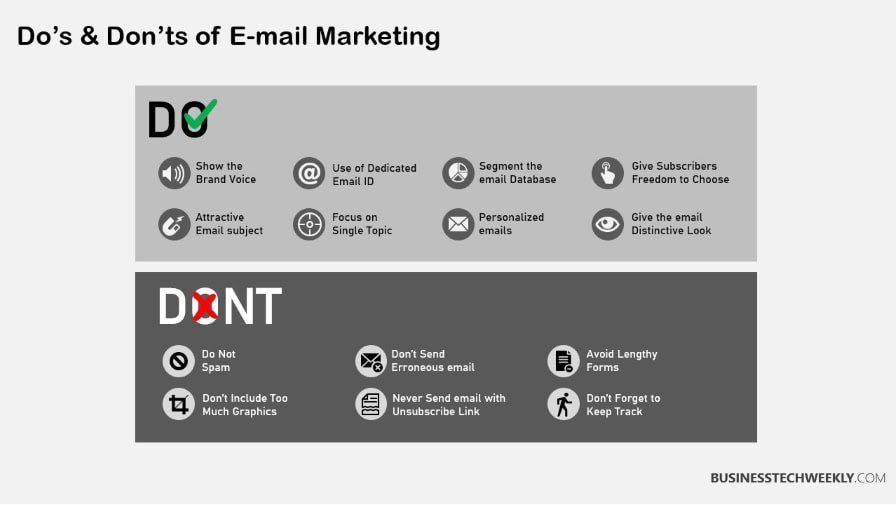
Improving Engagement and Deliverability
When it comes to email marketing strategies, two things really stand out: getting folks to engage with your marketing emails and ensuring those emails actually reach them. It’s all about crafting effective email marketing techniques that make your messages worth opening and preventing them from landing in the spam folder.
Strategies for Better Engagement
Let’s discuss engagement. It’s not about who has the biggest list, but about sending content that people love. You want your emails to be something subscribers look forward to.
For example, segmenting your list to send different types of content to different groups of people will increase engagement. An engaged audience is the key to getting into the inbox — more on that below.
Best Practices for Email Deliverability
Next, it’s ensuring your email marketing campaigns get delivered. Here’s a quick list of effective email marketing best practices.
-
Regularly clean your email list by removing inactive or invalid addresses.
-
Use SPF, DKIM, and DMARC to verify your emails.
-
Keep an eye on how people interact with your emails.
-
Focus on organic list growth rather than buying lists.
-
Maintain a good sender reputation; it’s critical to deliverability.
Design Mobile Responsive Emails
With more and more people checking emails on their phones, mastering email marketing techniques like mobile optimization is key to achieving successful email marketing results:
-
Use responsive layouts so emails adjust to any screen size.
-
Choose fonts that are easy to read on small devices.
-
Test your emails on various devices prior to sending them.
Ensure Dark Mode Compatibility
Dark mode is becoming somewhat of a fad in email marketing; to ensure effective email marketing, consider how your emails look in dark settings:
-
Adjusting color contrasts for better readability.
-
Testing emails in both light and dark modes.
-
Staying on top of this trend influences how your emails are perceived.
Craft Compelling Subject Lines
Subject lines are your first impression in email marketing campaigns. Make them count by:
-
Keeping them short and to the point.
-
Adding a sense of urgency to encourage quick opens.
-
Using A/B testing to see which lines work best.
Improve Email Deliverability Rates
Finally, let’s boost those deliverability rates by implementing effective email marketing strategies:
-
Keeping a clean contact list and verifying email addresses.
-
Using IP warming to gradually increase send volume.
-
Not sending so many emails so often that you ruin your reputation.
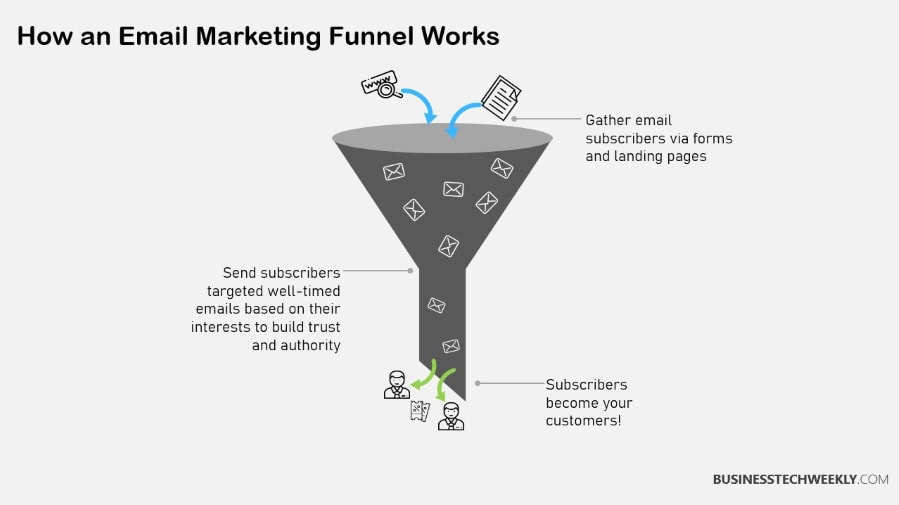
Maximizing Audience Engagement
In advanced email marketing, you’re actually trying to build a deep relationship with your subscribers. You want to turn them from passive readers into eager participants.
So why is that so important? Email engagement is a critical metric now. This is especially true now that big providers such as Google and Yahoo have rolled out new deliverability rules.
Consumers crave personalization, with 62% expecting it from brands. If they don’t get it, they’ll likely go to a competitor. Let’s get straight into how you can make the most of engagement.
Develop Two-Way Communication Strategies
We’re talking about building bridges, not walls, when it comes to engaging email content. To start with, encourage subscribers to engage in dialogue.
This can be as simple as adding a feedback request or a survey in your emails.
These tactics not only invite conversations but also send the message that you value your audience’s input.
-
Surveys and polls
-
Feedback requests
-
Interactive content (e.g., quizzes)
-
Response emails customized just for them
One of the best ways to get subscribers hooked is to get them talking. When people feel heard, they’re likely to stick around.
Offer Exclusive Content and Incentives
Everybody loves a deal, of course. Providing pointed value and rewards encourages subscribers to return for more. Not only do these offers increase engagement, they also support subscriber retention.
-
Exclusive discounts
-
Early access to products
-
Premium content (i.e., guides, e-books)
By offering value through these incentives, you demonstrate to your subscribers that being on your list is a good thing.
Reduce Unsubscribes with Surveys
Sometimes, knowing why people leave is as informative as knowing why they stick around. You can run exit surveys, for example, to capture feedback from your subscribers who choose to opt out.
-
What drove your decision to unsubscribe?
-
How can we make your experience better?
-
What content would you like more of?
These insights inform future email strategies, enabling you to modify your approach and decrease future unsubscribes.
Resend to Non-Openers and Optimize Opt-Outs
Not everyone opens an email on the first try, but that doesn’t mean they’re not interested. Plan follow-up emails to re-engage these non-openers. Timing is everything; experiment with advanced email strategies for different times of the day or week that have higher open rates.
-
Unsubscribe links are easy to find
-
Exit surveys for feedback
-
Personalization within follow-up emails
You now have a goldmine of data to analyze non-opener behavior and refine your strategies. A/B testing different elements such as subject lines and CTAs can also increase engagement.
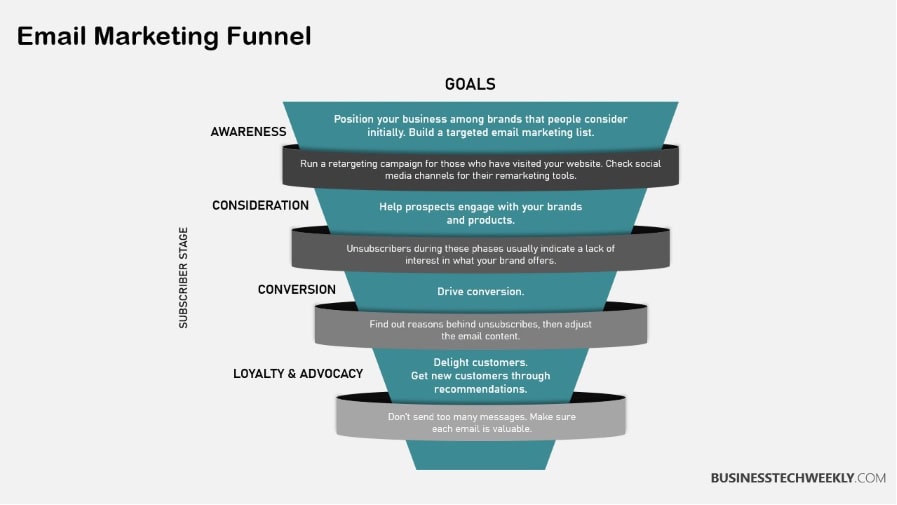
Wrapping It Up
Email marketing can power your business in huge ways. Put automation into play to save time and effort. Create campaigns that really resonate by segmenting and personalizing your audience. Monitor performance to adjust and optimize. Engagement and deliverability matter, too. When you nail these, your audience feels connected, not spammed.
Remember, it’s about the right message, to the right person at the right time. Stay nimble, find the trends, and keep on testing. You got the tools; now go make some magic happen. Whether you have questions or need help, you know where to find us. Dive in and check it out here. Just keep learning; keep growing. Let’s get those emails opened!
Frequently Asked Questions
What is advanced email marketing?
Advanced email marketing strategies involve sophisticated techniques that enhance email communication, segmentation, and automation to improve engagement and maximize email marketing results.
How can I automate my email campaigns?
You can automate your email campaigns using advanced email marketing strategies and software that allows you to schedule marketing emails based on user behavior or set triggers for specific actions.
Why is profiling important in building contacts?
Profiling aids in mastering email marketing by understanding your audience’s preferences and behaviors, facilitating advanced email marketing strategies for targeted messaging that boosts engagement and conversion rates.
What types of content should I create for my emails?
Create valuable content such as informative articles, exclusive offers, or engaging visuals, while implementing advanced email marketing strategies to address the needs and interests of your audience.
How does segmentation improve email personalization?
Segmentation is one of the advanced email marketing strategies that divides your audience into smaller groups based on characteristics, enabling tailored messaging that resonates more effectively with each group’s interests.
What should I consider for a seamless email experience?
Ensure your emails utilize advanced email marketing techniques to be mobile-friendly, visually appealing, and easy to navigate.
A seamless experience enhances email deliverability, keeps users engaged, and reduces unsubscribe rates.
How can AI enhance my email marketing strategies?
AI can analyze data patterns to optimize send times for marketing emails, personalize content using advanced email marketing techniques, and predict user behavior, leading to improved targeting and higher conversion rates.

